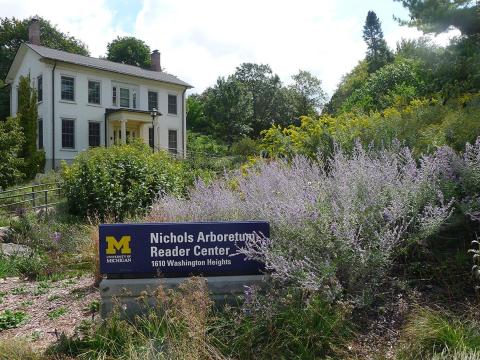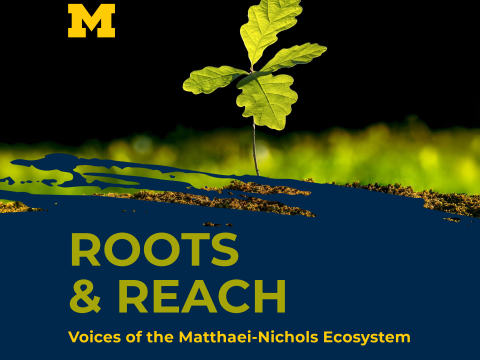Cup-and-saucer plant (Holmskioldia sanguinea Lamiaceae)
Intro to Naming
Walking through the gardens and the trails at the botanical gardens and the arboretum, you will see labels near many plants. These labels tell you the name of the plant. Or, actually, two names. The first is the common name, which is how the plant is referred to by “everyday” people. The second is its binomial Latin name, or the “scientific” name. These names do more than identify; they provide a shared framework for understanding, reflecting the cultural, scientific, and social contexts in which they were created. But what happens when some names fall short, mislead, or even harm?
Before we dive in, let’s first ground ourselves in some rules in naming conventions. The paragraph above states that the Latin name is “binomial.” This simply means the name has two parts. The first is the “genus,” which denotes the group of closely related plants it is a member of. The second is the “species.” The species distinguishes the plant from others in its genus and often stores information about its physical characteristics, uses, or the region where it grows. For example, Eastern White Pine, a tree native to Michigan, has the Latin name “Pinus strobus.” “Pinus” tells you that it is part of the genus “Pinus,” a group of trees that share characteristics such as cones, needle-shaped leaves, and aromatic sap. “Strobus” means “pinecone” in Latin, indicating a physical characteristic of the tree. The Latin name is purposefully encoded, and botanists use it to place the plant within the context of the field.
So, while names are helpful—they ground us in a shared understanding and clarify the plant species we refer to, they can also limit us and, sometimes, cause harm.
For example, the statement in the paragraph above that the common name is how the plant is referred to by “everyday people” lacks the full nuance of naming. Who are “everyday people”? In our current botanical model, we give primacy to English and Latin names. However, many of the plants in our collection, especially in our conservatory, come from places where neither English nor Latin are the primary languages used.
The next part of the statement above, which says that these labels tell you the plant's common name, is also incorrect. While the Latin name is, by function, universal, almost all plants have a wide range of common names in various languages. Thus, sometimes, a name acts as the “ceiling” to our curiosity about a plant. A more helpful framing might be to consider the given name of a plant as the “floor” to our curiosity, a place to ground ourselves in a shared botanical understanding before opening the door to learn more. When happening upon a plant and learning one of its names, our curator, David Michener, provides some possible questions to ask to broaden our understanding of the plant names we encounter:
- Who is the name for?
- Who uses this name?
- How do people from the area where the plant is native know it?
- How do people who settled or came to the area know it?
- How do people who have had the plant brought to them know it?
These questions can also help us better understand those plant names we might come across that are uncomfortable, problematic, or offensive.
Uncomfortable Plant Names
In 2021, the American Public Garden Association published a thorough report titled “Potentially Problematic Common Names in North American Public Gardens.” This document is a tool that botanical institutions can use to identify and examine the potentially problematic plant names they use in their collections and make decisions on usage. As the authors state, “Botany, as a field, is deeply intertwined with the histories of colonialism, racism, and imperialism. Both vernacular and botanical nomenclatures have been used over time with little consideration as to how they might perpetuate past harms and amplify present biases. They are well overdue for review. “
The current list (which the authors are careful to say is not comprehensive) includes over 100 words that could be problematic within a plant name. The report breaks these into four helpful subsections: “Derogatory,” “Unknown Origins,” “Uninclusive, Misleading, or Potentially Inappropriate,” and “Geographic Misattributions.” These distinctions are helpful, as potentially problematic plant names fall on a spectrum of offensiveness. While a common name might, at worst, take a name straight from a slur, the report makes clear that “others are more subtle or perhaps completely unintentional. However, that should not diminish our drive to create safe, inclusive spaces for our guests and colleagues by questioning how our plants got their nicknames and whether they could cause harm when encountered in our collections. “
Common names are good contenders for change at the institutional level. Because of their casual nature, they tend to have more potential to insult visitors than their Latin counterparts. And, because each plant often has many monikers, it is easy to find an existing alternative. As the report states, “Sometimes common names and botanical names overlap, usually among genera (ex: a common name for the genus Delphinium is delphinium), but often the common names reflect regional dialects, folklore, medicinal properties, or the physical attributes of the plants that they name. Each language will have its common names for plants. Sometimes, these names can even be downright botanically misleading. For example, a daylily (Hemerocallis) is not a lily (Lilium) at all. It isn’t even in the same family (Liliaceae).“
It doesn’t mean that Latin names don’t have their issues, too, but shifts in binomial nomenclature are more challenging as the purpose of the name is to be universal and unchanging. (It’s not impossible: Here is a link to an article about the change of an offensive genus and here is an interesting NPR piece on the topic.)
Because common names are numerable and malleable, botanical institutions have an ethical responsibility to handle the problematic plant names in their collections. There is no standard catalog for plant common names as there is for their Latin counterparts. Therefore, as the report states, “It is up to us as professionals to do the work in a way that honors our guests and our communities. Garden professionals have been given the platforms necessary to make and maintain these powerful names.”
While the 2021 report is an excellent place to start, it does caution that in addition to not tackling botanical names, it also doesn’t tackle cultivars or eponyms. Cultivars are specific genetic varieties of plants, and like Latin names, they must go through a complex process to be officially changed. Eponyms are plants that are named after people as an enduring honor. And these names can be rather tricky. Sometimes, the people for whom these plants are named have complicated legacies. Eponyms are so contentious that the American Ornithological Society decided in 2023 to officially change the common names of all bird species named after humans. Their president explains, "There is power in a name, and some English bird names have associations with the past that continue to be exclusionary and harmful today.” The same applies to plants, though no similar sweeping effort yet exists in the botanical world. In the meantime, a good remedy is to interpret where a plant’s name comes from. You can read about the commemorative name of our seasonal display plant here.
We were lucky to chat with one of the report's authors, Jaime Frye, on our podcast, Roots & Reach. (You can listen to the recording and find a transcript here.) She explains there can be no prescriptive solution to problematic plant names because the impact of certain names are incredibly regional. An example she uses to illustrate this point is the case of the “Digger Pine.” The term has a long history as hate speech towards indigenous peoples in California used by settlers to imply inferiority and primitiveness. She explains that institutions based in California may need to be more alert to this name than institutions based in the Midwest or abroad, where this association is not so common. “Words that may seem benign to a white, east-coast dweller may be a severe racial slur to Indigenous peoples in California.” Instead, the project recommends that institutions work closely with their communities when they think of making changes. ”This project – a national endeavor – cannot make these decisions for gardens that exist in such geographically diverse locations, each with their own cultural histories. Instead, the project’s recommendation is that institutions looking to make changes work closely with local organizations and networks that can provide input based on individual criteria and preferences, and through this work develop meaningful partnerships that are both ongoing and mutually beneficial.”
Plant Name Updates here at MBGNA:
The flexibility institutions have in common naming is represented in our collections here at MBGNA. In our tropical house, a vibrant plant with grape-like flowers, known scientifically as Medinilla magnifica, now boasts the common name “Showy Medinilla.” However, it was once known as the “Malaysian Orchid Tree,” a geographical misattribution of a plant native to the Philippines. Our curators chose a different common name that was not geographically incorrect and was actually more accurate in describing the plant. A member of the botanical family Melastomataceae, the showy Medinilla is not an orchid (family Orchidaceae).
Another example grows in a northeast bed of the Arid House. Mountain Jointfir (Ephedra viridis) is a stick-like shrub native to the American southwest. It was once accompanied by the label “Mormon Tea.” This common name referred to its use by Mormon settlers. But that name erased an important part of the plant’s history- those settlers first learned this use from the Indigenous peoples of the region, including the Papago, Pima, Cahuilla, White Mountain Apache, Kawaiisu, Zuni, Shoshoni, Navajo, Havasupai, Paiute, and O’odham who, for millennia, had used the plant either medicinally or as a dye.
Going back to the questions above, it is clear how the name “Mormon Tea” ignored the cultural histories attached to the plant and the names with which the Indigenous peoples of the area knew it. Still, while the name Mountain Jointfir is a more neutral term, it, too, lacks the full story of the plant’s name. Another name for the plant is “Indian Tea,” but use of the term Indian is contentious. The 2021 report dedicates a full paragraph to this discussion on page twenty. Among its Indigenous names, the plant is known in Navajo as Tł’ohozihii. A 2023 post about Traditional O’odham Plants from the O’odham Action News shares that a common name for the plant is ku:pag in O’odham and that in Piipash, the name might be something like ’iishiu or ’iishu.
This multitude of names one plant species might have reflects the dynamic relationships between language, culture and plants. Recognizing this, MBGNA continues to explore ways to incorporate interpretation that provides names from a polycentric lens. In the past, MBGNA has identified some Great Lakes plants in our collection using names in one dialect of Anishinaabemowin, the prominent Indigenous language of this region. However, plant naming works differently from an Indigenous lens. Plants might not have just one name, but many, changing depending on relationships, such as by season or use. Because of this plurality of names, MBGNA looks to a future with Indigenous native speakers to guide us and with exciting possibilities for representing multiple plant names through our evolving digital interpretation plans.
One final example from our collections is the Cup and Saucer Plant. This name was changed from “Chinese Hat Plant.” The 2021 Problematic Plant Names Report details how this name is odd when considering the plant’s native range. “Neither of the plants having this common name are native to China. It is likely they are named thus for the shape of the flower on the plant. The Asian conical hat, or rice hat, is not exclusive to China and therefore does not seem to be the best way to describe this plant – especially since the plants are not associated with China in another way.” The updated name is more apt in describing the interestingly shaped blooms
While these examples of change demonstrate our institutional commitment to inclusivity, they don’t mean this work is done. In the podcast, Jaime explains how this work is not something you can do once and be done with. “It’s always going to be evolving and shifting alongside our socio-political climate and cultural adaptations.”
While we’re grateful for the lessons that have led us to remove many harmful plant names from our collections, there are plant names we continue to discuss. One example is our beloved sausage tree in the tropical conservatory, infamous for its long sausage-shaped fruits. Although the German word “sausage” is not on the APGA’s list of potentially problematic words, the name does divorce the plant from its cultural relevance. Further, if consumed, the fruits are poisonous to humans, so naming the plant after something edible is unwise. Found throughout tropical Africa, it is known by many Indigenous names such as kigeli-keia, its Mozambican name.
We don’t pretend to be experts on every name. As the report concludes, “A little cultural humility goes a long way, as it is impossible for any one person to be competent in understanding the infinite regionalities and cultural histories found across the globe. When looking at these names, then, it is important to decentralize personal narratives and reference cross-cultural lists of words, slurs, and offensive phrases.” We invite you to join our curiosity and conversation as we continue to think about this rich matter of plant naming with wonder, humility, and respect. Names are memory aids; through them, we can learn about the many ways each plant has been and continues to be known.


